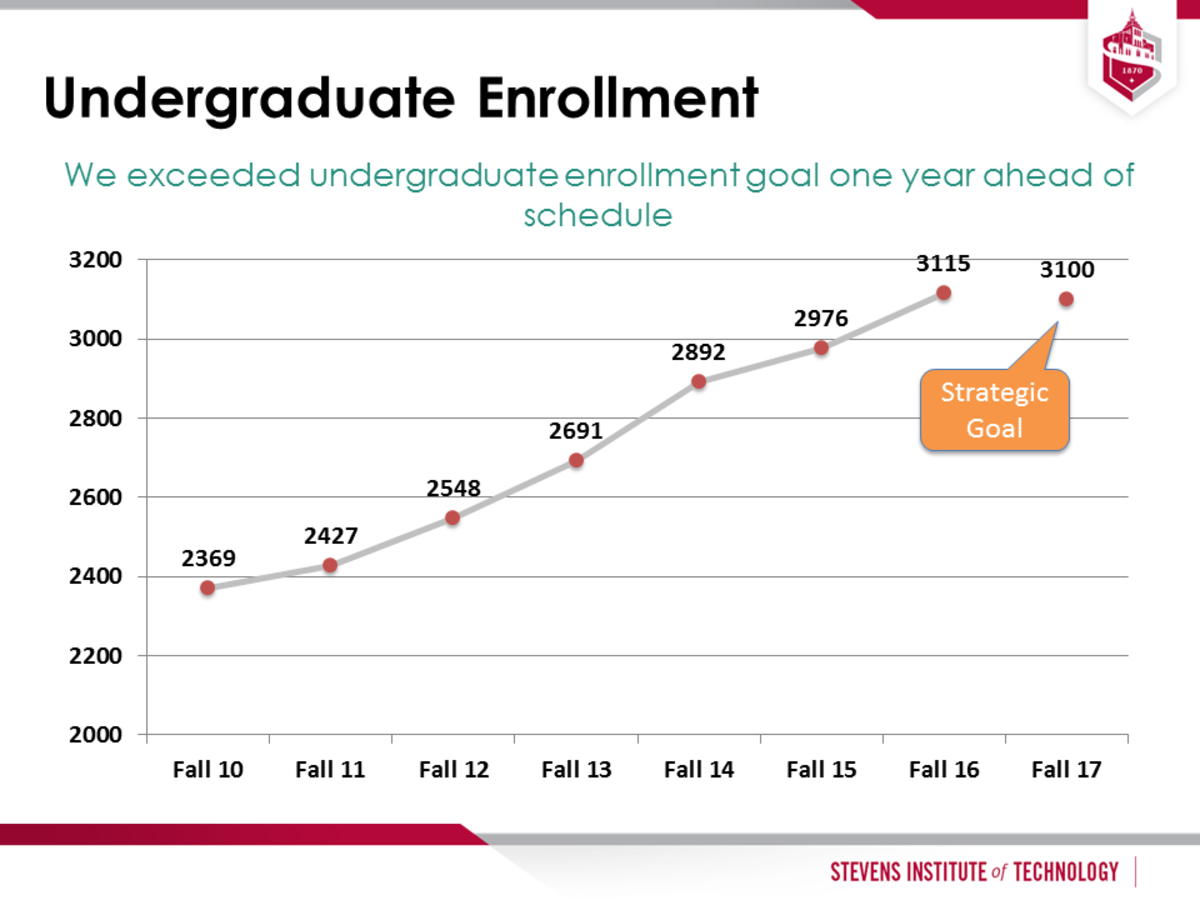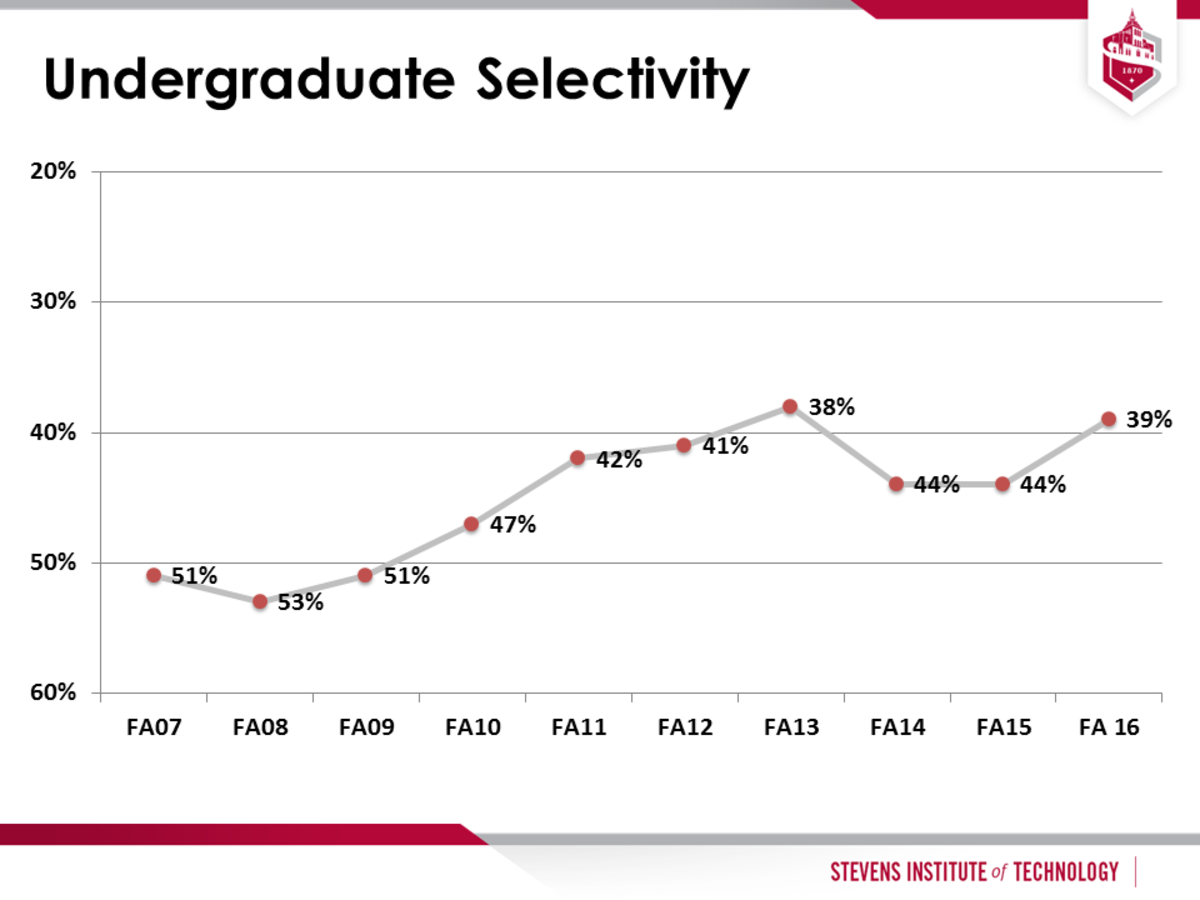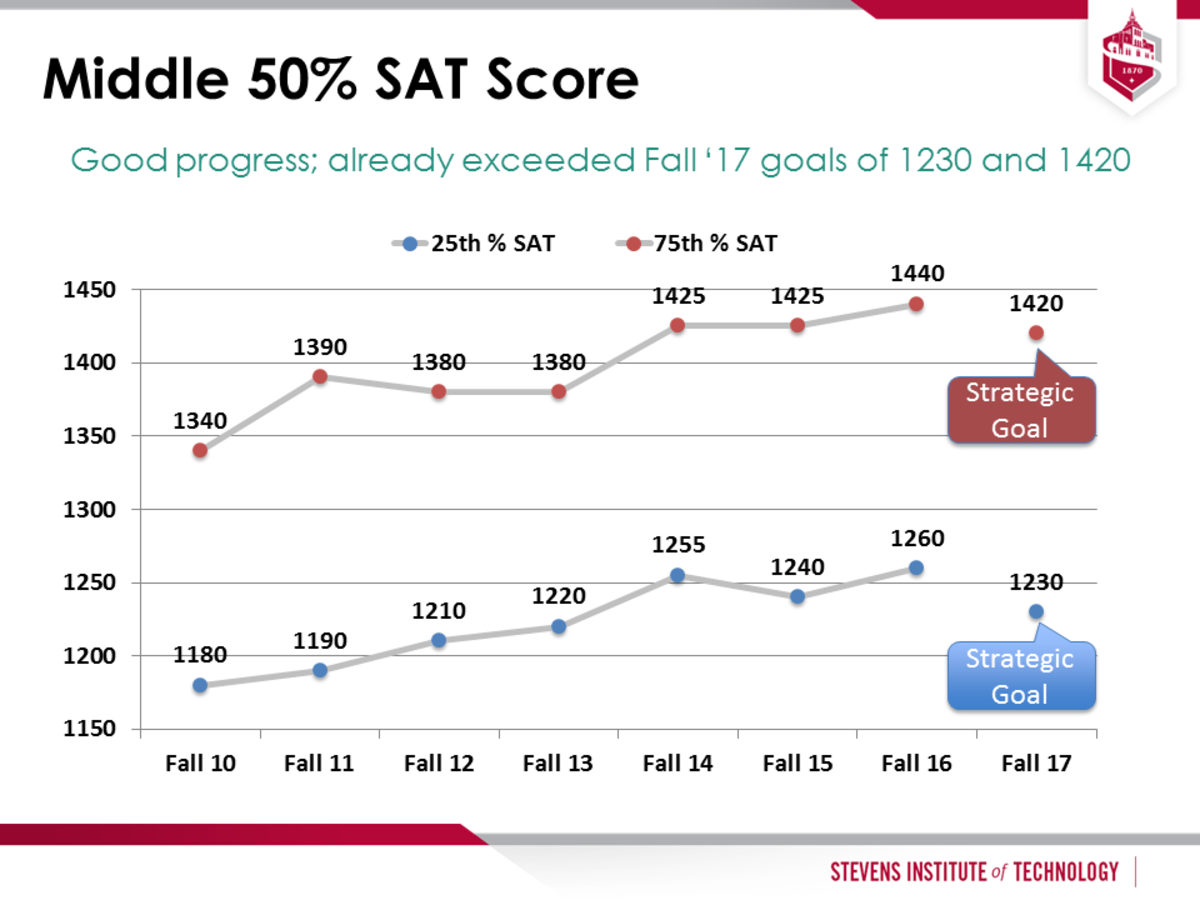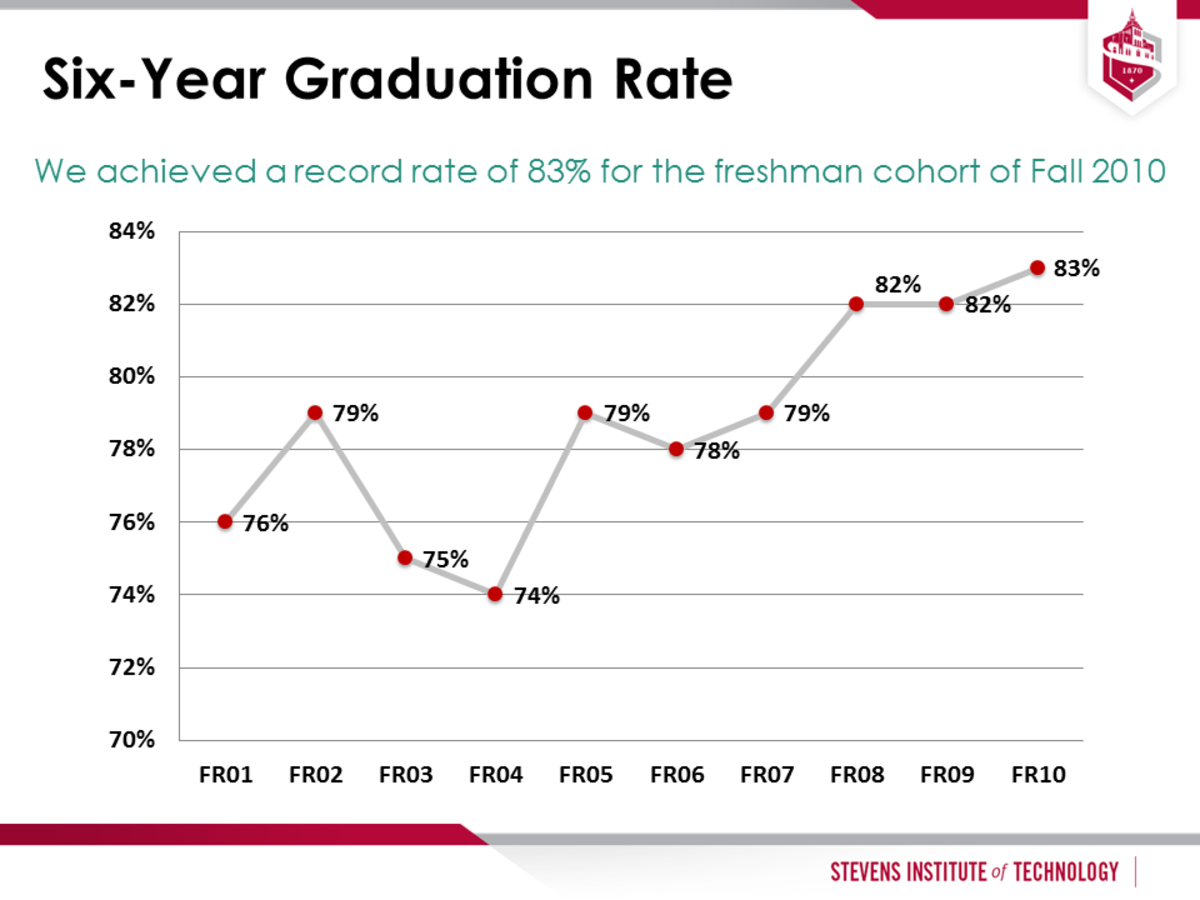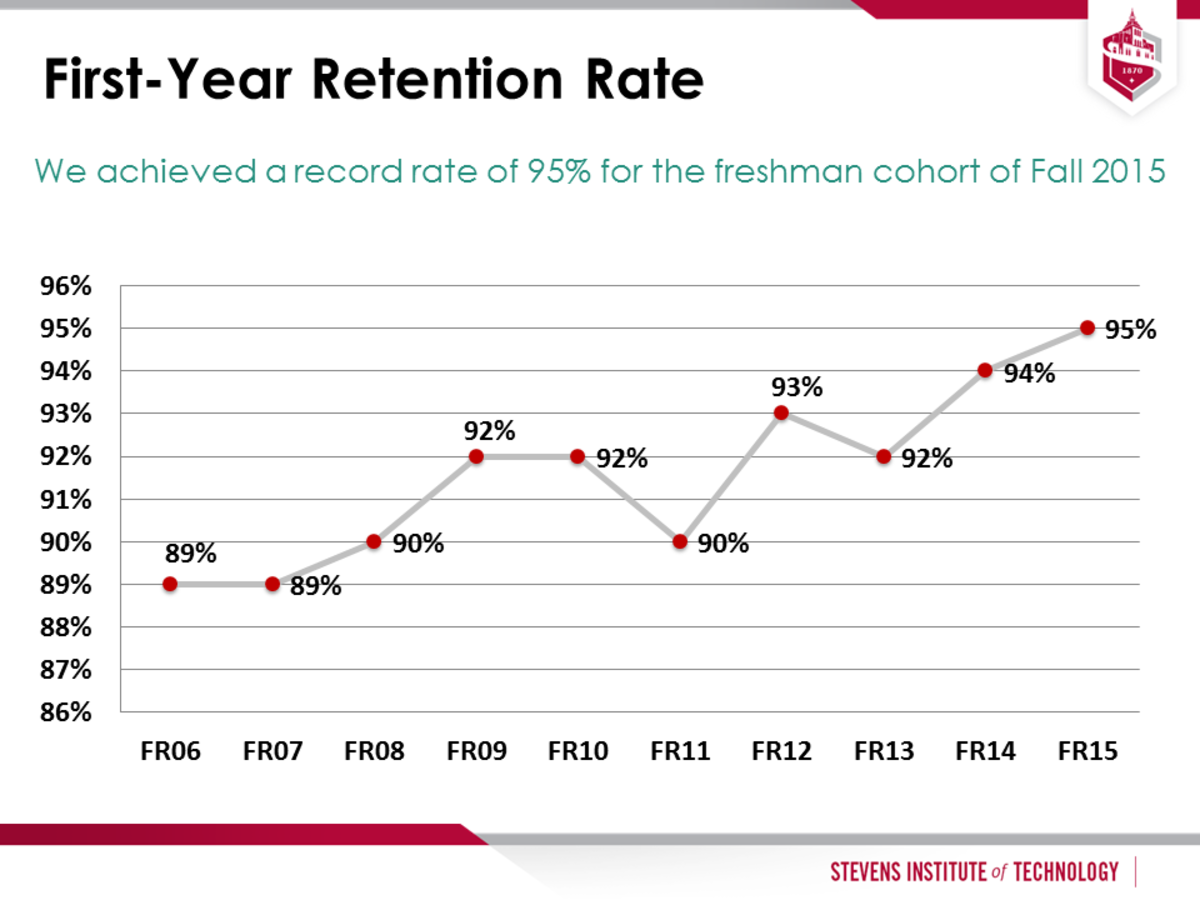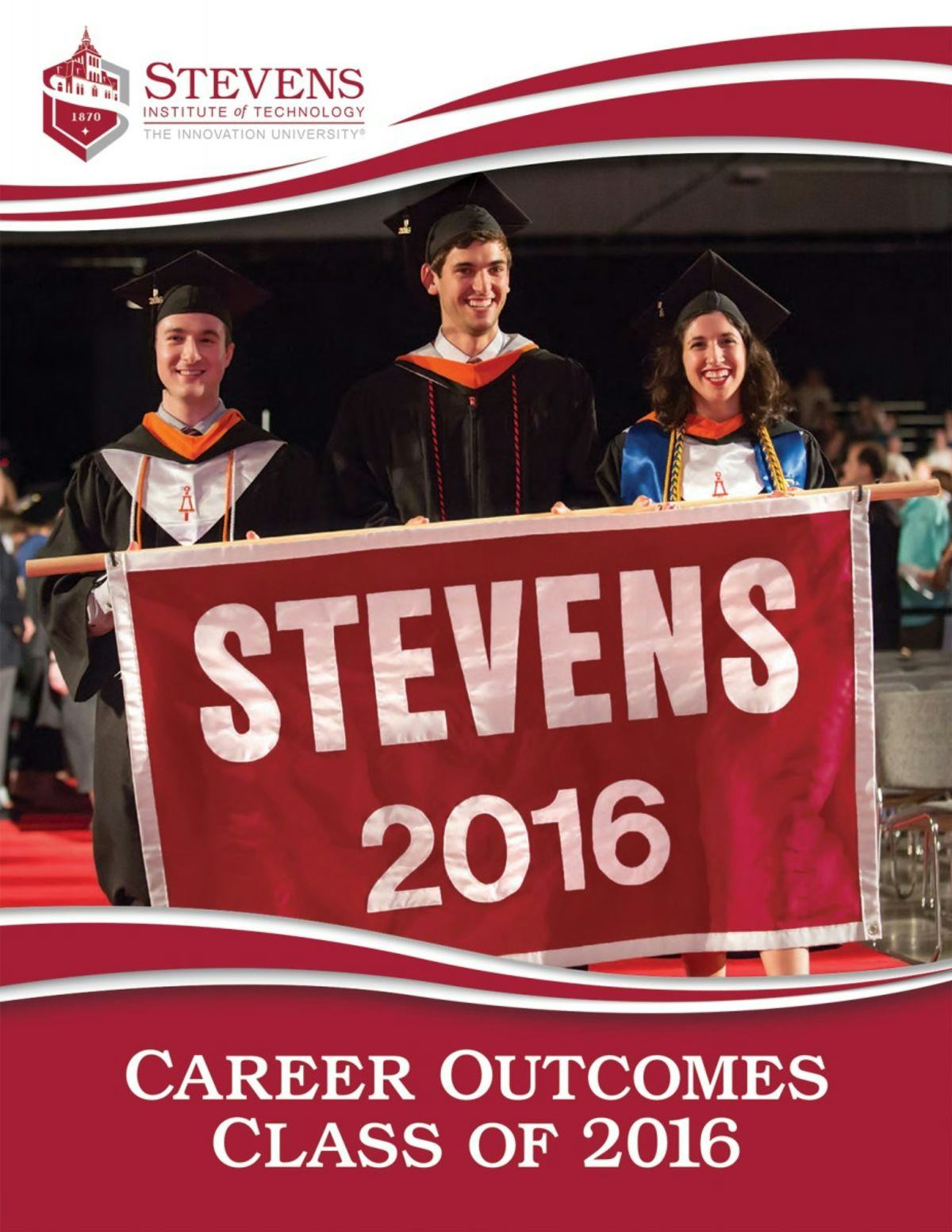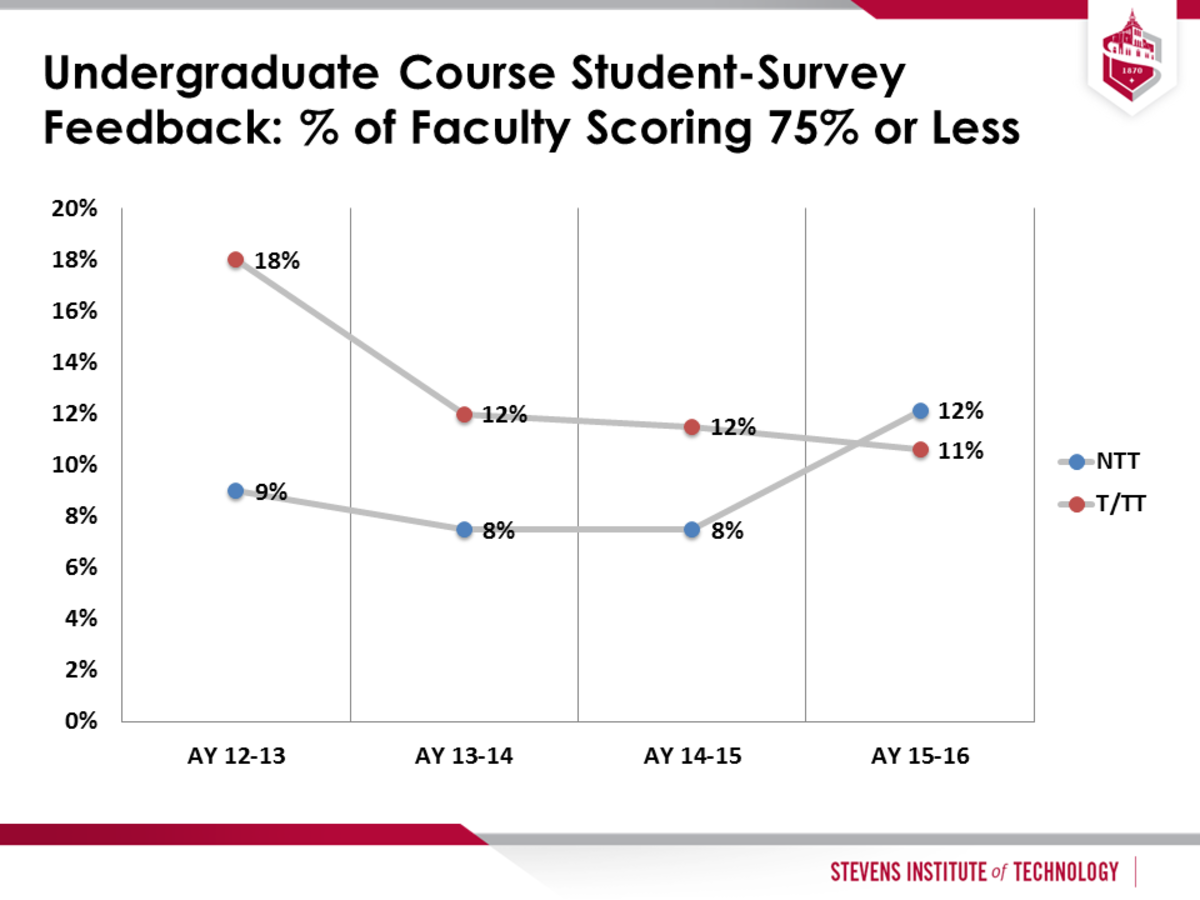Several measures of undergraduate studies and experience met or exceeded strategic plan goals. Total undergraduate enrollment increased from 2,976 in Fall 2015 to 3,115 in Fall 2016, a 5 percent increase. Applications increased to 7,409 and selectivity reached 39 percent, an improvement from 44 percent in Fall 2015. The middle 50 percent SAT score reached 1260-1440, exceeding the Fall 2017 goal of 1230-1420 for the second year in a row. The freshman-to-sophomore retention rate increased to a new record of 95 percent. The six-year graduation rate for the freshman cohort of 2010 reached a record high of 83 percent. The placement rate for 2016 graduates who secured full time employment, graduate school or the military six months after graduation increased to a new record of 96 percent, one percentage point higher than for the Class of 2015.
Goal U1:
Stevens will have an undergraduate student enrollment of approximately 4,000 from a baseline of 2,427 in Fall 2011. The intermediate goal is to have an undergraduate enrollment of approximately 3,100 by 2017.
OWNER: VICE PRESIDENT MARYBETH MURPHY
Fall 2016 undergraduate enrollment was 3,115, exceeding the Fall 2015 enrollment figure of 2,976 by 139 students, a 5 percent increase and exceeding the Fall 2017 goal of 3,100 one year early. The Fall 2016 undergraduate cohort (freshmen, transfer students and LINK program participants) was 785 new students, 10 students above the target of 775. Applications increased to 7,409, a 13 percent increase above the final application number of 6,540. The percentage of women in the freshmen class increased 4 percentage points to 32 percent, and the percentage of out of state students in the first time full time freshman class was 43 percent, an increase from 39 percent in Fall 2015. The percentage of international students in the freshman class is 5 percent, up slightly over Fall 2015. Freshman enrollment in the College of Arts and Letters increased from 19 to 30 students and freshman enrollment in Business increased from 78 to 112 students.
Year 5: The incoming class target for Fall 2017 is 800 (up from 775 last year), with increases in the College of Arts and Letters, Business, Mathematics and the Sciences. An additional goal is to increase diversity by enrolling more women, underrepresented, international and out-of-state students.
Goal U2:
Continue to improve student selectivity and therefore the academic profile of the incoming class. Specifically, the percentage of first-time, full-time undergraduate applicants who are admitted will be 37 percent by 2017 and 33 percent by 2022, from a baseline of 42 percent in 2011. The middle 50 percent SAT score of new freshmen will improve to 1230-1420 by 2017 and 1280-1450 by 2022, from a baseline of 1190-1390 in Fall 2011.
OWNER: VICE PRESIDENT MARYBETH MURPHY
Stevens accepted 39 percent of applicants, an improvement over the Fall 2015 acceptance rate of 44 percent. The Fall 2016 middle 50 percent SAT is 1260-1440, compared to 1240-1425 in Fall 2015, and exceeding the Fall 2017 strategic plan goal.
Year 5: The goal for Fall 2017 is to continue to improve the academic profile of the class and improve selectivity.
Goal U3:
The six-year graduation rate will improve significantly with the goal of achieving at least 83 percent in Fall 2017 (for cohort of Fall 2011) and at least 87 percent in Fall 2022 (for cohort of Fall 2016).
OWNER: PROVOST GEORGE KORFIATIS (YEAR 4) PROVOST CHRISTOPHE PIERRE (YEAR 5)
The six-year graduation rate for the freshman cohort of 2010 reached 83 percent (a record high for the university, attaining the 2017 goal one year early). The first-year retention rate reached 95 percent, one percentage point above the comparable percentage for Fall 2015.
Year 5: Continue to implement control processes and support mechanisms to improve retention and graduation rates. Focus special attention will be placed on academic advising.
Goal U4:
Overhaul the academic schedule and implement curriculum changes with the aim of encouraging and facilitating an array of learning opportunities, including interdisciplinary research and development, critical thinking and problem-solving, community service, K-12 STEM mentoring and international experience (Curriculum ++). In May 2018, 100 percent of undergraduate students will graduate having participated in C++.
OWNER: PROVOST GEORGE KORFIATIS (YEAR 4) PROVOST CHRISTOPHE PIERRE (YEAR 5)
A faculty working group was formed with representation of all academic units to explore a “digital badging” approach to implement the Curriculum++ concept. A preliminary proposal was developed that included a credentialing system to recognize accrued knowledge, skills, abilities and experiences (KSAE). A proposed set of digital badge clusters was created to define and recognize graduates for their learning both inside and outside of regular coursework centered around several key competencies: Entrepreneurial Mindset; Global Mindset; and Leadership. A pilot was planned for Year 5.
Year 5: Planning, implementation, and assessment of the pilot will take place in Year 5. The organizational and technical support needs of a badging program will also be evaluated in the pilot.
Goal U5:
Maintain our stellar placement record for our students and seek to further improve it from our 2011 baseline of 92 percent of students securing post-graduation outcomes as of Nov. 1, 2011.
OWNER: VICE PRESIDENT MARYBETH MURPHY
A record 96 percent of graduates of the Class of 2016 have secured outcomes (jobs, graduate school, etc.) this year, over 95 percent in 2015. A new Associate Director has been hired to lead career advising for graduate students and services for graduate students have been expanded.
Year 5: Continue to provide excellent service to students. With the growth in the College of Arts and Letters and School of Business, place special emphasis on career advising for increasing numbers of students from these schools.
Class of 2016 Career Outcomes Report
Goal U6:
Stevens will have designed, constructed and staffed a Digital Learning Laboratory (DLL), focusing on the research and practice of technology-enhanced learning across all three schools and CAL (by Fall 2017).
OWNER: PROVOST GEORGE KORFIATIS (YEAR 4) PROVOST CHRISTOPHE PIERRE (YEAR 5)
Three “ignition grants” were funded to support digital learning. Digital learning and online teaching have been incorporated within the plans and programming of the Academic Gateway building
Year 5: Evaluate feasibility and determine the level of priority and “fit” of the DLL concept for Stevens.
Goal U7:
A sustained effort consisting of specific initiatives will be undertaken to improve our undergraduate faculty teaching performance and student learning.
OWNER: PROVOST GEORGE KORFIATIS (YEAR 4) PROVOST CHRISTOPHE PIERRE (YEAR 5)
The assessment of teaching performance processes initiated in Year 3 continued in Year 4, based on student course evaluations. The percentage of T/TT faculty who scored below 75 percent (3.0/4.0) was: 11 percent in AY15-16 (vs. 12 percent in AY14-15). The corresponding percentages for NTT faculty was12 percent in AY15-16 (vs. 8 percent in AY14-15).
A $2.8M grant from the National Science Foundation (the “Foundations” grant) commenced in Fall 2015 directed at infusing evidence-based teaching best practices into the foundational mathematics, science and engineering courses that are the gateways to students’ success at Stevens and nationally in STEM education. The program supports faculty teaching professional development, classroom support for implementing active learning models, and initiatives aimed at bolstering institutional recognition and reward practices to promote faculty engagement in reforming their teaching approaches.
Other initiatives to enhance teaching and learning include: the Calculus Initiative, which has continued its transformation of teaching and learning in the early mathematics courses taken by most undergraduates at Stevens.
The innovation and entrepreneurship workshop within the two-semester senior design course sequence taken by all engineering undergraduates has been fully implemented. This course, together with the core entrepreneurial thinking course in freshman year, is directed at developing an entrepreneurial mindset in our graduates, which we believe is a key success enabler for 21st Century careers.
Year 5: Assess participation in and efficacy of current programs offered through Center for Faculty Advancement and as part of the Foundations NSF grant. Report on progress and issue recommendations for improved participation, improved outcomes, and consideration of other assessments to measure teaching and learning progress for various groups of faculty and students. Establish a goal that by 2020, at least 90 percent of full time faculty (in each category separately) engaged in undergraduate teaching will receive a 3.0/4.0 or better in student course evaluations.
Augment, promote, and track faculty’s use of resources contained in the Faculty & Staff Professional Development Resources Canvas shell, including: 300+ online seminars for enhanced teaching & learning; recordings of on-campus workshops on teaching & learning; syllabus guideline documents; and resources for new faculty.
